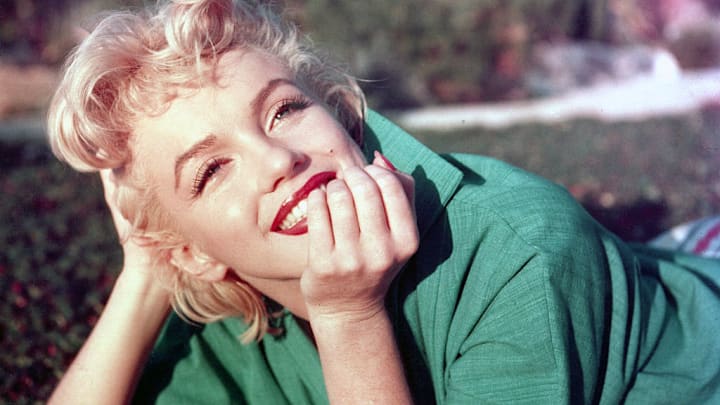In 1945, a 19-year-old Norma Jeane Baker signed up with modeling agency Blue Book. The receptionist wrote down her measurements as 36-24-34, which at 5’5” and 118 pounds would be considered, by today’s BMI standards, a completely healthy, average size. But even then, the head of the company referred to her as "too plump, but in a beautiful way." Another note from the receptionist: "Size 12."
Marilyn Monroe's figure has been discussed almost as much since her death in 1962 as it was when she was stunning on screen and at parties during Hollywood's Golden Age. From the '50s hourglass ideal that she embodied, to her enduring sex symbol status, her actual dress size comes up time and time again. "The myth that Marilyn would be considered near plus-size today has become a battle cry in the culture wars over female body image," NPR has reported. "The truism that the world's sexiest woman would be fat by today's glamour standards has been repeated unattributed in hundreds of articles and books."
But part of the confusion—and the reason this myth perpetuates—stems from the fact that as retail fashion changes, clothing sizes change as well. Sizing during Marilyn's day was not the same as today's market sizing: A woman who wears a modern size 8 cannot shop for size 8 vintage clothing. The fit would be completely off.
When discussing vintage clothing sizes, we have to keep in mind that dresses and pants were cut slim because they were intended to be worn with structured bras and girdles, and more recent vanity sizing has skewed our notion of clothing and body sizes. The market for ready-to-wear women's clothing consistently changes, and with that, the standards for production.
Before World War II, women's clothing was mass-produced with the same sizing mindset as men's—the only measurement taken into account was the chest. While an assessment of the chest measurement can roughly deduce the proportions of the rest of the body for menswear, that obviously doesn't hold true for women. Following the war, more standard measurements were put in place for womenswear, and in the 1950s, a commercial standard was set. Women's clothing for off-the-rack production would range from 8 to 38 based first on bust, and then height, hips, and girth. There was no such thing as a sizes 0 through 6.
This sizing was standard through the early 1980s when it was withdrawn—companies noticed that appealing to one's vanity helped with sales (which still holds true today). The private standards organization ASTM International, which publishes annual updates for clothing manufactures, regularly accommodates for this size inflation. As the size and shape of the average American woman began to change, so did the vanity sizing aimed at soothing egos. While a size 8 was considered the smallest available in 1958 when the initial sizing standards were put into effect, an 8 corresponded to roughly a 31-24-33 body. By 2008, a size 8 had increased by five to six inches for each of those measurements. By 2011, the ASTM even had a standard size 00.
Though Marilyn's weight and sizing obviously fluctuated over the course of her career, her standard measurements, according to her dressmaker, were roughly 35-22-35. This accounts for why her pant and dress sizes were often listed as an 8 and 12, respectively—a dress would also need to accommodate her bust, while pants could be sized smaller based on her slimmer hips. She is often cited as having been a size 16—and she was! Kind of. But only based on British vintage sizing (a UK size 16 was a rough equivalent to a U.S. size 12 in the '50s). But according to today's sizing guides—which is what people generally have in mind as a reference when discussing her measurements—Marilyn would be roughly a U.S. size 6 or 8. She'd likely need an 8 for her bust, but with forgiving fabric, a 4 or a 6 would easily fit her hips. And of course, her tiny waist would certainly need a belt.
